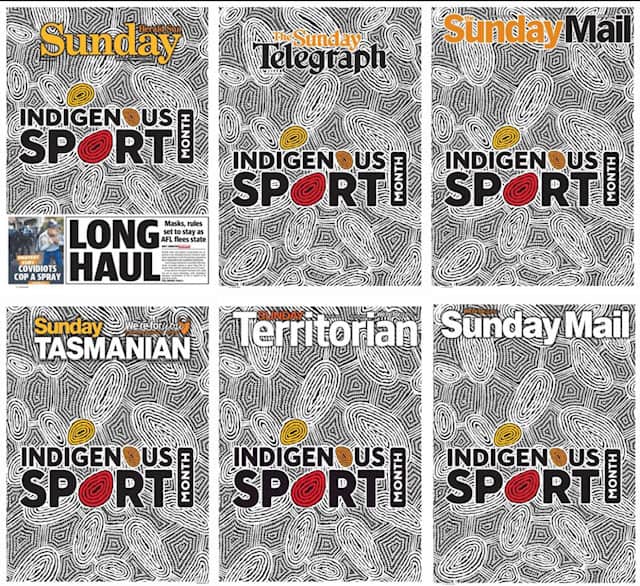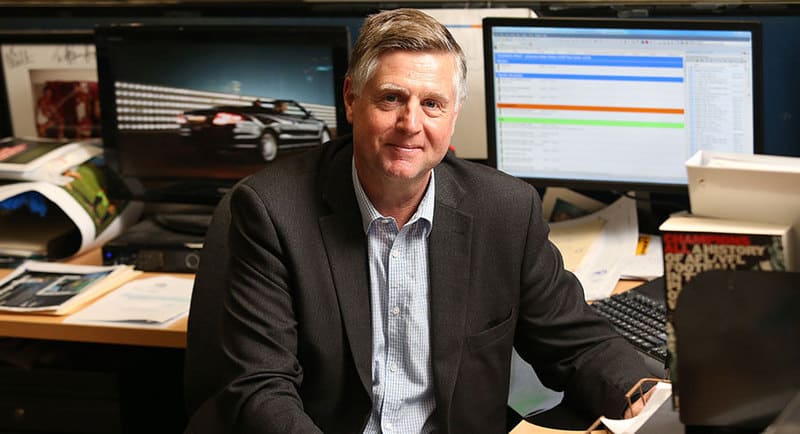News Corp’s Indigenous Sport Month is highlighting Indigenous Australian participation in sport and celebrating their achievements. The project is also highlighting the issues confronting Indigenous athletes through interviews with sporting icons and athlete profiles.
Mediaweek spoke to News Corp’s national deputy sports editor and lead editor of Indigenous Sports Month Tim Morrissey about how the project came together and what this means for Indigenous sport.
“What we really want to do is recognise and celebrate the achievements of Indigenous athletes. We want to give them the opportunity to tell their story, but also be prepared to ask questions and be prepared to get answers which may make people feel uncomfortable,” Morrissey told Mediaweek.
“We want to be confronting as well as inspiring and engaging and getting the buy-in from the sports and the athletes is really important. This is the first step for us on a long journey to help build awareness around the contributions of our Indigenous athlete’s past, present, and future.”
To launch the campaign, every Sunday newspaper at News Corp Australia simultaneously published a front page with no text or story, where every front page was devoted exclusively to highlighting Indigenous affairs through the use of Aboriginal art.
The artwork was by Maureen Hudson Nampijinpa and it represents the travels of many groups of women during Tjukurpa (Law or Lore time) in the area of Yarrungaunyi, on Mount Doreen Station west of Yuendumu, northwest of Alice Springs, Northern Territory. The artwork also represents all the different “skin” groups with their campsites being the circles, and the connecting lines the route of their creation journeys.

The logo was created by leading Aboriginal-owned strategy and design agency Balarinji who took the original artwork and draws out three circular symbol, representing camps that define points of belonging in pathways across the land.
Morrissey said that it is a month-long editorial led project which followed the team being told to come up with a new way to cover Indigenous sports off the back of NRL and AFL Indigenous rounds where there was never enough time in the week to cover things as in-depth as they would have liked.
“We just felt we should launch a month of Indigenous sports coverage; it just gives us a chance to really look at the issues and talk to as many Indigenous athletes that we can and give them a chance to tell their stories.”
The inspiration for the project came from the work that media companies do during Black History Month in the US.
“We see what sites like ESPN and The Athletic do and the focus that they put on that. And I thought that in Australia the sports have their Indigenous rounds or launch Indigenous jerseys but it’s all a little bit ad hoc. We thought why not try and showcase and profile this over the course of a month.
“Spring boarding off the back of Indigenous rounds for the AFL and NRL was an ideal time to do it and coincides with reconciliation week and leads into NAIDOC week.”
The idea was born in one of the companies’ regular meetings and Morrissey said that he pulled together a synopsis on what an Indigenous Sports Month could look like.
“I worked closely with Matt Kitchin who’s the sports editor for the national sports newsroom. So, we workshopped that and that was presented to the editorial board and news, and we were given the thumbs up to go ahead with it.
“That’s when we started coordinating with our marketing team to come up with a logo, talking to Fox Sports to get their buy-in, etc. So once all that happened, things started to happen pretty quickly.
“We started at the end of March, so it’s been pretty amazing what we’ve been able to pull off in such a short time. The other thing which I find really encouraging, we didn’t want to make this a one-off from an editorial point of view, we want to make it clear to the company that this will be an ongoing project for us. And everyone is on board with that as well. “
The Stories
The team behind Indigenous Month wanted to make a statement with a maximum impact which Morrissey said led to an interesting experience.
“We had a pretty comprehensive news list and then we just went into the different areas. When we started talking to the athletes a lot of the stories just opened up.”
The content plan for Indigenous Month is to do a profile a day with comprehensive deep-dive features on the weekends. The first two weeks will focus on NRL and AFL and then will move into cricket, football, basketball, and then a heavy focus in the final week on Indigenous athletes at the Olympics and Paralympics.
“This will springboard nicely into the start of July, where as a company we will be increasing our focus on The Games.”
Morrissey said when picking the athletes to profile they are not just looking at current sporting stars but the past, present, and future with different levels of profiles.
“We have a profile piece on a young Indigenous surfer Jasmine McCorquodale, she is on the central coast, a year 12 student and wants to be the first Indigenous athlete on the World Surf League, and she is not a household name by any stretch.
“Some of the Olympic Athletes aren’t high profile so it is a good opportunity to tell their stories as well.”
Collaborating within News Corp
Morrissey said that the project had no commercial partners and is purely editorial but was made possible due to collaborations throughout the company.
“We’ve had a great collaboration with Fox Sports and Fox Sports News, so we’ve been able to do some video interviews using Jake Duke and Hannah Hollis.
“So those video interviews will be showcased on Fox, Kayo, and also available to our internal platforms and news as well. We’ll reverse publish out of those interviews with a digital presence on our sites and in print.”
Morrissey said that it was a big job bringing together all the different pieces of the project from start to finish.
“From the start commissioning an Indigenous company to source some artwork and create the logo, going through the right processes with that, and then launching it internally, and working our schedules when we can do interviews that suit everyone’s time, it was a bit tricky, but the fact that everyone was invested in it and was driven by editorial made a big difference.
“We’ve had other sports who haven’t featured so far who have been pitching up ideas and opportunities to interview some of their Indigenous athletes which has been really great.”
